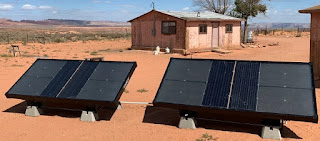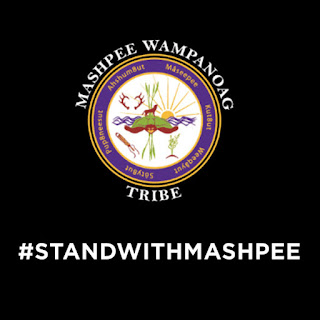Enola Hill, a densely forested, pristine watershed ridge on Mount Hood (Oregon), was under the threat of logging operations. A coalition of Native Americans, historians, and environmentalists appealed and delayed the U.S. Forest Service's timber sale, pending ethnographic studies to determine the area's cultural significance. The ethnographic studies revealed that Enola Hill is a tawyash, a Sahaptin Indian word for a place where spiritual power can be obtained and maintained. In fact, there is no other site in the Pacific Northwest with such great cultural significance. For thousands of years, Enola has been a Native American Mecca -- a revered and sacred place for pilgrimages, ceremonies, and vision quests.
As I continued to read the article, I came across a reference to a spectacular waterfall known to natives as Spirit Horse Falls (Devil Falls on USDA maps). The falls got its name from vision questers who saw a spirit horse rising from the mist. As I read these words, I was overcome by a profound sense of euphoria and resolve. I knew that this sacred waterfall was the "Spirit Horse" that Jade had told me to find. I expressed my gratitude for this gift in a prayer to Creator.
Two weeks later, I stood for the first time on Enola Hill, overlooking Spirit Horse Falls. The power of the roaring falls and the beauty of the rain forest filled my senses with a lucid-like awareness. I felt a holistic connection to my Earth Mother. In my heart I felt that I had finally come home. I drummed and performed a ceremony for the protection and preservation of this sacred place that provided spiritual power for this region. I prayed that this nerve center in the web of life would continue to distribute vital energy throughout the surrounding natural systems.
Afterwards, I made the three-hour drive back to my home in Bend, Oregon. That night, and for many nights to follow, my dreams were filled with drums, Enola Hill, and Spirit Horse Falls. In my dreams, I saw myself drumming at all the waterfalls around Mount Hood. I was told that the rivers that flow from this mountain are sacred. These rivers feed the spirit. This water will awaken the people when you drum at the falls. All who touch this water will be awakened. I was told that a home would be provided from which I will go out to drum the sacred places. It is time to consecrate these sacred places. The time has come to awaken them.
Three months later, a friend contacted me regarding a caretaker position in the Mount Hood area. I soon relocated to a community near Enola Hill and Spirit Horse Falls. I spent the entire summer, hiking to waterfalls and drumming the sacred waters. By the end of the summer, I had completed a circuit around Mount Hood. Having completed my mission, I sensed that my work there was done. I moved back to Bend, Oregon, yet Spirit Horse Falls will always be a significant power place for me. I still make pilgrimages to the falls to drum and pray.
Unfortunately, the threat of logging persists at Enola Hill. Though ethnographic studies reveal otherwise, the Mount Hood Forest Supervisor has determined that there are no traditional cultural sites on Enola Hill. The Forest Service contends that Indian cultural use of the site was transitory and doesn't qualify for the National Register of Historic Places. The U.S. Forest Service hungrily eyes the mature forests on Enola. This greed for more timber to cut makes the agency loath to acknowledge the native cultural and religious value of the area. The continuing degradation of sacred sites stems not only from colonial attitudes about the lands where native people live and worship, but also from prejudice and disrespect for native religions. Indian religious freedom is an environmental issue, and the destruction of sacred sites is the ultimate environmental racism.




















